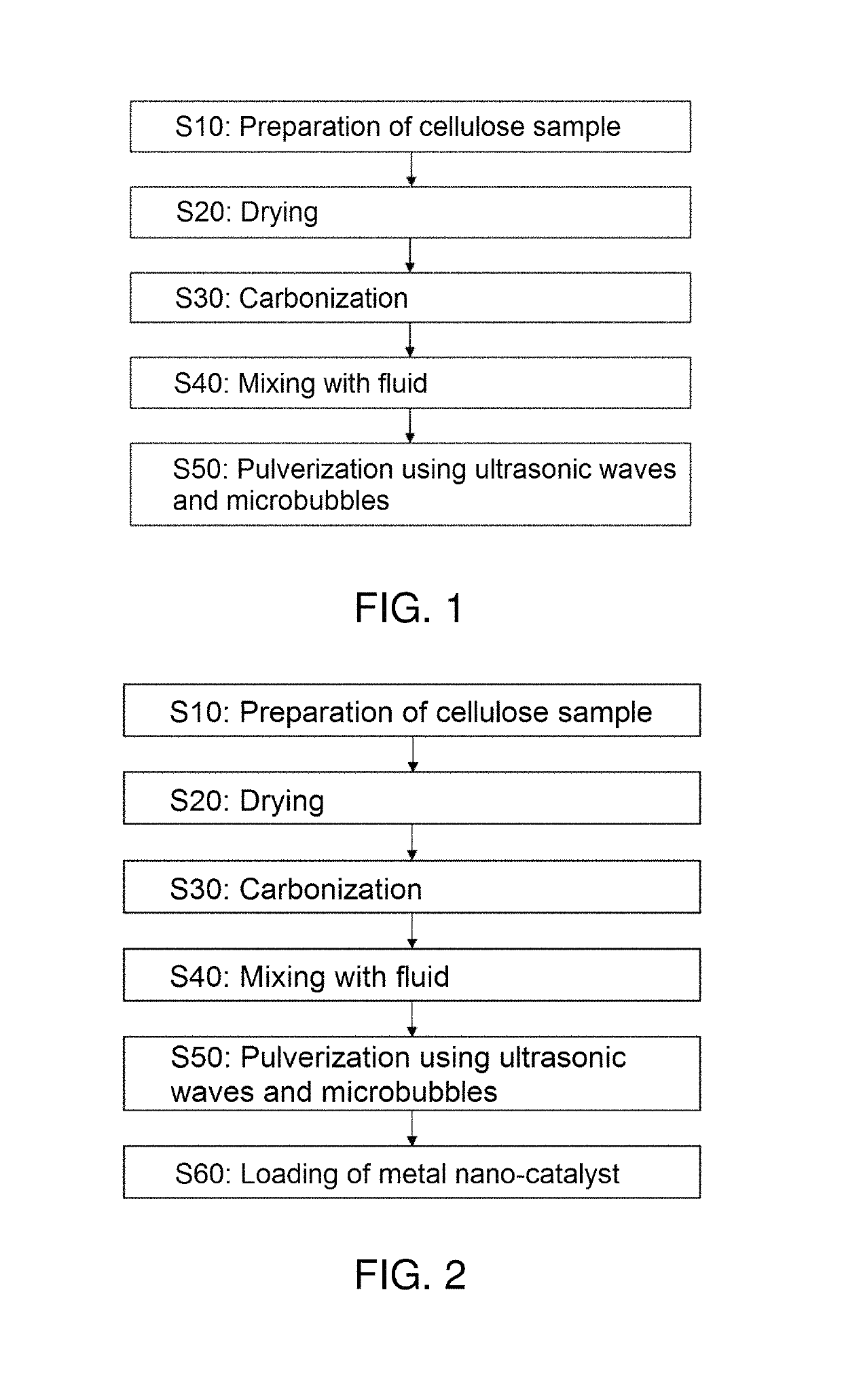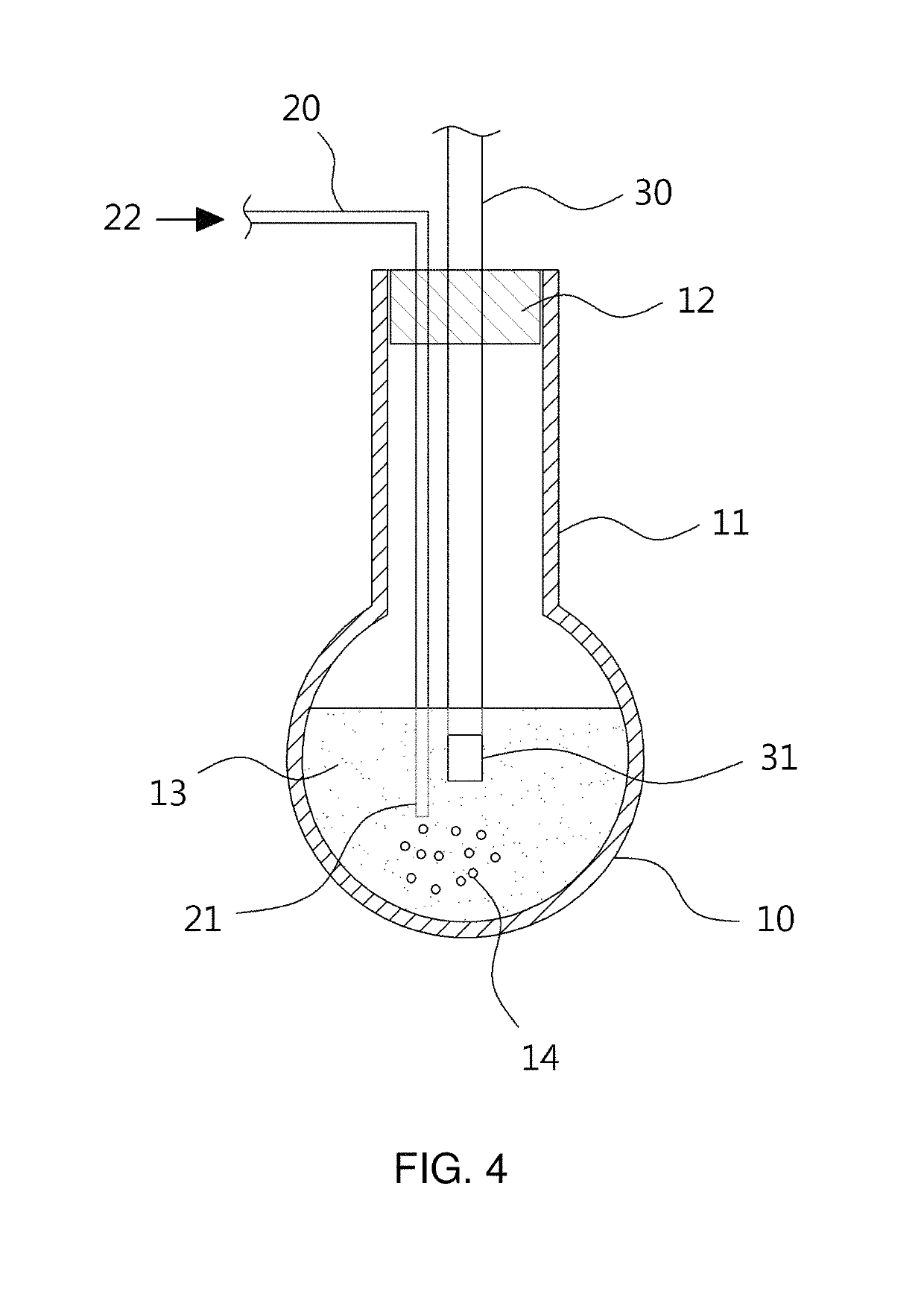Method of preparing minute carbonized cellulose and method of preparing catalyst support using the same
a carbon nanotube and carbon nanorod technology, applied in the field of carbon nanotube manufacturing, can solve the problems of increasing manufacturing costs, many limitations in the use of carbon nanotubes and carbon nanorods as catalyst supports, etc., and achieves the effects of reducing catalyst manufacturing costs, increasing surface area, and maximizing catalytic activity
- Summary
- Abstract
- Description
- Claims
- Application Information
AI Technical Summary
Benefits of technology
Problems solved by technology
Method used
Image
Examples
example 1
[0067]Preparation of Carbonized Fine Cellulose
[0068]1. Preparation and Drying of Cellulose Sample
[0069]A cellulose gel produced by bacteria was uniformly ground using a mixer for 30 min. The ground cellulose sample was placed in a vacuum vessel and was then added into liquid nitrogen in a vacuum, thereby being lyophilized. The cellulose obtained through lyophilization was found to maintain the fibrous structure of cellulose alone, as shown in FIG. 6.
[0070]2. Carbonization of Dried Cellulose Sample
[0071]In order to carbonize the lyophilized cellulose sample, the dried cellulose sample was placed in a carbonization furnace. While nitrogen was allowed to flow in the carbonization furnace for 30 min, impurities were removed from the carbonization furnace and an inert atmosphere was created, after which the inner temperature of the carbonization furnace was increased from room temperature to 600° C. at a rate of 5° C. / min. The cellulose sample was carbonized for about 2 hr in an inert ga...
example 2
[0074]Formation of Catalyst Support using Carbonized Fine Cellulose
[0075]The acetone solution in which the carbonized nano-sized cellulose of Example 1 was dispersed was filtered using a filter paper, thus obtaining a carbonized nano-sized cellulose powder. The sample thus obtained was dried at room temperature for 12 hr or more, and further dried in an oven at 110° C. for 12 hr or more, thereby yielding a carbonized fine cellulose powder.
example 3
[0076]Preparation of Loaded Catalyst using Carbonized Fine Cellulose
[0077]The carbonized fine cellulose powder of Example 2 was placed in a quartz tube and subjected to chemical vapor deposition so that platinum (Pt) nanoparticles were loaded thereon, thus synthesizing a catalyst. The TEM and STEM mapping images of the synthesized catalyst having the carbonized fine cellulose loaded thereon are shown in FIG. 7.
PUM
| Property | Measurement | Unit |
|---|---|---|
| temperature | aaaaa | aaaaa |
| temperature | aaaaa | aaaaa |
| temperature | aaaaa | aaaaa |
Abstract
Description
Claims
Application Information
 Login to View More
Login to View More - R&D
- Intellectual Property
- Life Sciences
- Materials
- Tech Scout
- Unparalleled Data Quality
- Higher Quality Content
- 60% Fewer Hallucinations
Browse by: Latest US Patents, China's latest patents, Technical Efficacy Thesaurus, Application Domain, Technology Topic, Popular Technical Reports.
© 2025 PatSnap. All rights reserved.Legal|Privacy policy|Modern Slavery Act Transparency Statement|Sitemap|About US| Contact US: help@patsnap.com



